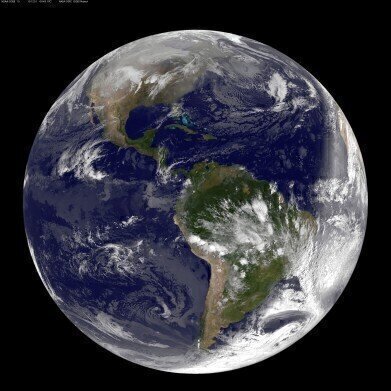News & Views
What Would Happen if the World Stopped Turning?
Apr 22 2015
Thanks in no small part to a couple of shrinking violets of the world of historical science, Nicolaus Copernicus and Galileo Galilei, we now know that the world revolves around the sun, which is at the centre of our solar system. We are also aware that the world rotates around its axis, which, because of the wonders of modern technology, we are actually able to watch happen. These two rotational phenomena combined work in perfect harmony to create our 24-hour days, our 365-day years and the ideal conditions for all types of life on Earth to flourish and grow.
But what would happen were the world to stop turning? Of course, such an event is an impossibility – however, it is interesting to speculate as to what could take place were it to occur. Thanks to the extraordinary predictive capabilities of Esri's geographic information system ArcGIS, we can actually estimate with confidence the catastrophic consequences that would come about if the world were to stop turning; here are four likely after-effects.
Sideways Launchpad
First and foremost, we should consider our ballistic trajectory. The Earth is currently hurtling around its axis at a breakneck pace of just over 1,000mph (at the equator – towards the poles, the speeds become slower). We can’t feel it because we are moving with it, in much the same way that you don’t feel like you’re cruising down the motorway at 70mph. However, should you stop suddenly (due to a crash, for example), you’d certainly feel it. If not wearing your seatbelt, you’d continue at the same pace through the windshield.
Consider that on the Earth, none of us are wearing seatbelts – including natural and man-made features such as trees, oceans and buildings. The thought of all of the world’s water suddenly being catapulted sideways at 1000mph is certainly the stuff of disaster movies, but it’s exactly what would happen in the event of a sudden halt in the Earth’s rotation.
A Day Would Become a Year
If the Earth didn’t turn, it would take the sun one full year to complete a full revolution through the sky. This means that for six months of the year, one half of the Earth would be scorched mercilessly, while the other would be shrouded in cold darkness. Imagine the havoc this would play with all of the flora and fauna on our planet, which depend on sunlight for sustenance and growth.
There Are No Seasons
Without rotation, the idea of a tilted axis becomes defunct. Yes, the Earth would still retain polar extremes, which would change the climate of certain regions. But these regions would no longer differ over the year – except for the amount of light they receive. Therefore the seasons as we know them would become irrelevant and instead we would have only two – night and day.
The Earth Would Become a Sphere
What’s that I hear you cry? The Earth is already a sphere? Well no, actually, it’s not quite. The rotational speed of our planet causes it to bulge out around the equator, thus making into an oblate spheroid, sort of like a ball with the air let out of it. Were we to stop spinning, the pressure would relax on the ball, allowing it to return to a spherical shape.
While this looks like an odd but harmless side-effect at first glance, it would actually cause major problems. The delicate balance of the Earth’s non-spherical shape causes the oceans to remain where they are. In the event of it becoming a ball, the oceans would redistribute, thus flooding many areas of land and jeopardising all life living there.
Science Answers Impossible Questions
This fascinating technology from Esri has been instrumental in unearthing what would happen to the Earth if the world stopped turning. Similar advances have also allowed us to answer other hypothetical conundrums, such as What Would Happen if Asteroid 2004 BL86 Hit the Earth, among many others.
Digital Edition
Lab Asia 31.2 April 2024
April 2024
In This Edition Chromatography Articles - Approaches to troubleshooting an SPE method for the analysis of oligonucleotides (pt i) - High-precision liquid flow processes demand full fluidic c...
View all digital editions
Events
Apr 28 2024 Montreal, Quebec, Canada
May 05 2024 Seville, Spain
InformEx Zone at CPhl North America
May 07 2024 Pennsylvania, PA, USA
May 14 2024 Oklahoma City, OK, USA
May 15 2024 Birmingham, UK


















